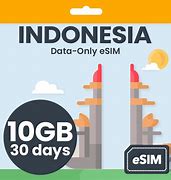
Cons of Using a Nano SIM
The Evolution of the SIM Card
Let's take a closer look at how SIM technology has evolved over time.
Getting Started With an eSIM
Ready to make the eSIM switch? Great choice! Getting started with an eSIM is super easy. Follow these steps to install and activate your first eSIM from Airalo.
First, you'll need to download an Airalo eSIM plan:
Once you've purchased an eSIM plan from Airalo, we'll send you detailed installation instructions. You can install your eSIM directly, manually, or with a QR code (keep in mind that some eSIMs may not allow direct installation).
You're all set to stay connected with eSIM technology! Browse the Airalo store to find an eSIM for your next adventure.
Alisha adalah ekspatriat Kanada yang tinggal di Portugal. Dia seorang yang rajin bepergian dan menulis segala hal tentang perjalanan dan teknologi untuk Airalo.
If you have a smartphone, odds are you've encountered a SIM card. It's the tiny piece of plastic you insert into your phone to connect to a mobile network. SIM cards have come a long way, from the standard SIM (launched in 1991) to the nano SIM (the current standard) and the eSIM (the latest and greatest technology). But what's the difference?
In this article, we'll cover the ins and outs of SIM cards, nano SIMs, and eSIMs. By the time we're done, you'll have learned the following:
SIM stands for "Subscriber Identity Module." Traditionally, a SIM has been a portable memory chip that you insert into your mobile device to connect you to a carrier's network. Your SIM card contains your phone number and allows you to make calls, send texts, and more.
A SIM card may look like a piece of plastic. But in that plastic is an integrated chip that stores up to 265 KBs of information about you as a mobile customer. Each SIM card holds a user's IMSI (International Mobile Subscriber Identity) and ICCID (Integrated Circuit Card Identifier) data. Mobile networks use the IMSI and ICCID to verify you as a mobile subscriber and grant you access to your carrier's network.
Pros and Cons of Using an eSIM
eSIMs take SIM cards to the next level. They're a more affordable, convenient, and secure way to stay connected. However, they have yet to be adopted across all devices. Here are some of the pros and cons of using an eSIM.
The Evolution of the SIM Card
Let's take a closer look at how SIM technology has evolved over time.
From Physical to Digital: Nano SIM vs. eSIM
The biggest difference between nano SIMs and eSIMs is that one is physical, and the other is digital. While nano SIMs may be tiny compared to the original SIM card, they're still external to your device. If you want to switch carriers or use a local SIM card when you travel, you have to remove your nano SIM and replace it with a new one. This can be cumbersome due to the size of the nano SIM — because it's so tiny, it's easy to damage and misplace.
The eSIM, on the other hand, is integrated into your device. It's embedded in your phone's hardware and can't be removed (unless you break open your phone, which we strongly advise against!). An eSIM does all the same things as a nano SIM, but it works 100% digitally. If you want to change carriers or switch plans, you can download a digital data plan and connect to a new network in minutes. And most devices will allow you to store multiple eSIMs on your phone, eliminating the need to keep track.
Most phones have a nano SIM and eSIM. However, with the launch of the eSIM-only iPhone 14 in the United States, eSIM technology could become the standard.
Using a Nano SIM and eSIM Together
Did you know you can use a nano SIM and eSIM at the same time? Most modern devices are equipped with Dual SIM technology, which allows you to use more than one SIM card or eSIM simultaneously.
Dual SIM allows you to do the following:
Let's say you live in North America and have an iPhone 13. Your device is eSIM-compatible, carrier unlocked, and can store up to eight eSIMs at a time. You travel often and want to avoid swapping your nano SIM when you're abroad. Instead, you download an Airalo eSIM plan for your destination and stay connected whenever and wherever you travel.
Pros of Using a Nano SIM
JavaScript seems to be disabled in your browser. For the best experience on our site, be sure to turn on Javascript in your browser.
If you have a smartphone, odds are you've encountered a SIM card. It's the tiny piece of plastic you insert into your phone to connect to a mobile network. SIM cards have come a long way, from the standard SIM (launched in 1991) to the nano SIM (the current standard) and the eSIM (the latest and greatest technology). But what's the difference?
In this article, we'll cover the ins and outs of SIM cards, nano SIMs, and eSIMs. By the time we're done, you'll have learned the following:
SIM stands for "Subscriber Identity Module." Traditionally, a SIM has been a portable memory chip that you insert into your mobile device to connect you to a carrier's network. Your SIM card contains your phone number and allows you to make calls, send texts, and more.
A SIM card may look like a piece of plastic. But in that plastic is an integrated chip that stores up to 265 KBs of information about you as a mobile customer. Each SIM card holds a user's IMSI (International Mobile Subscriber Identity) and ICCID (Integrated Circuit Card Identifier) data. Mobile networks use the IMSI and ICCID to verify you as a mobile subscriber and grant you access to your carrier's network.























